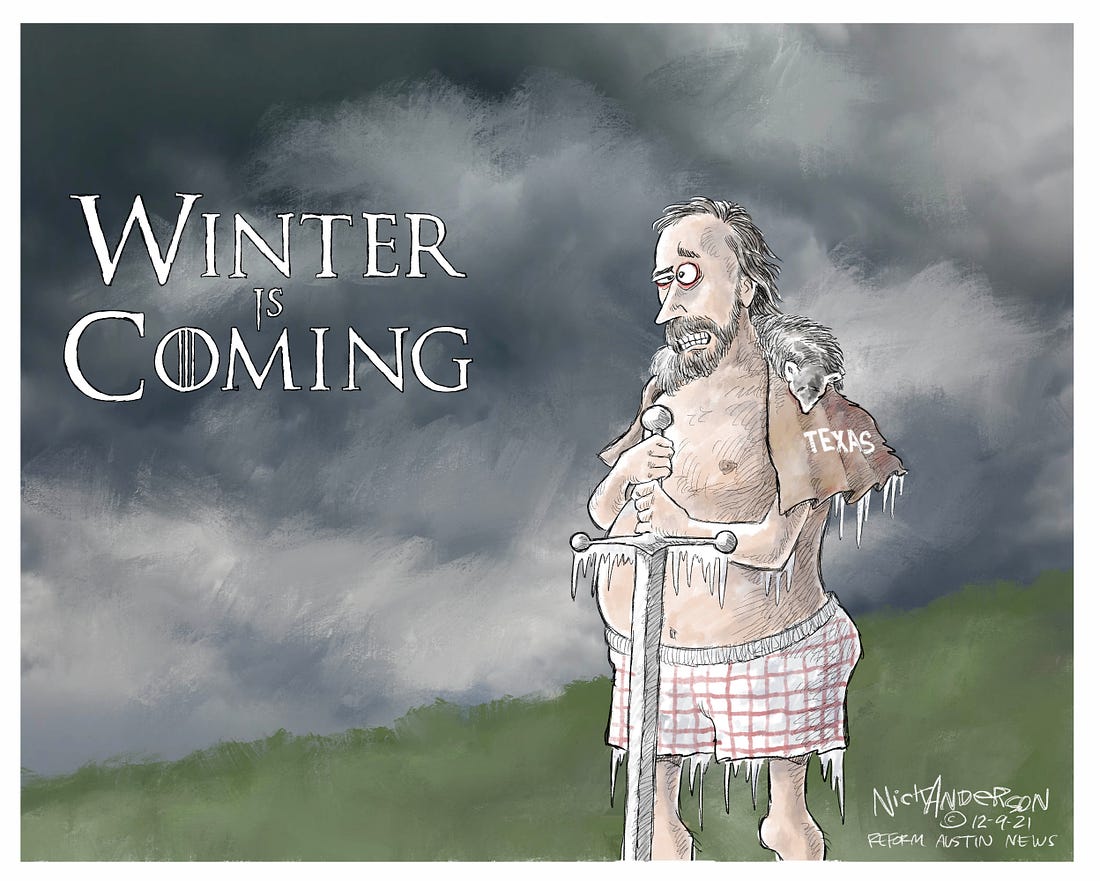Basically, this cold front wasn’t anything like last year’s cold front.
Texas’s power grid passed its biggest test since last year’s deadly blackouts, keeping most lights on during a wintry blast. This storm, however, was far less severe than last year’s monstrous one, leaving questions whether the state is really ready for another deep freeze.
While reforms politicians enacted in the past year did help keep power plants running, analysts and power-market experts say the biggest reason things went so smoothly was it simply wasn’t as cold for as long. That meant natural gas kept flowing and wind turbines worked far better, helping the grid meet the increased power demand as millions of Texans cranked up electric heaters.
“The grid held up fine for a couple of reasons: the weather wasn’t as bad as we thought, and wind overperformed,” said Michael Webber, an energy professor at the University of Texas. “The demand wasn’t as high, and the supply wasn’t as low.”
[…]
Gas flowed freely during this week’s storm, but that’s largely because it didn’t get cold enough.
“The state still remains vulnerable because we have not set requirements for winterization of the gas system,” said Webber, who’s also chief technology officer at venture fund Energy Impact Partners. “As such, the reliability of gas production is still flimsy.”
In Dallas, last year’s temperatures fell as low as -2 Fahrenheit (-19 Celsius), and there were 11 straight days with highs below 40 degrees. This year, forecast lows are around 10 degrees, and meteorologists expect just three consecutive days with highs below 40.
In Midland, the hub of the oil- and natural gas-rich Permian Basin, last year saw eight consecutive days when temperatures never rose above freezing, which crippled the flow of gas and starved power plants of fuel. This time, Midland didn’t have back-to-back days when the mercury stayed below 32 degrees.
“The last one was both longer and more extreme,” said Marc Chenard, a meteorologist at the U.S. Weather Prediction Center.
While Ercot didn’t ask consumers to conserve, widespread closures of schools and businesses helped cut down on consumption. Peak demand for electricity was significantly lower and a bit later than anticipated Friday morning, with consumption hitting 69 gigawatts when Ercot previously projected record demand of 75.6 gigawatts. A gigawatt is enough to power about 200,000 Texan homes.
And don’t forget the coin miners. Like Slytherin in the Battle of Hogwarts, the coin miners did their part.
In the short run at least, this is good for Greg Abbott, whose bet paid off. By the same token, though, we’ve spent the last few weeks talking about the freeze, reliving our experiences from it, and expressing a big lack of confidence in the grid, even if it did stay up this time. We still have the actual one-year anniversary of the freeze coming up in about a week, so we’re not done yet with the trauma of it all. That can’t be great for Abbott. He won his bet, which meant he didn’t get absolutely pummeled by circumstances that he had some control over but did nothing to affect, but the payoff was mostly that he broke even. That’s probably good enough for him since he’s leading in the polls, but winter isn’t over yet, and I doubt too many people are feeling better about it. The DMN has more.

